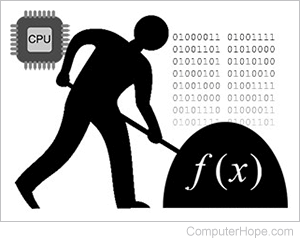Proof-of-Work

Proof-of-Work (PoW) is a method for securing computing services from abuse, such as a denial of service attack, e-mail spam, or cryptocurrency fraud.
Before a PoW-protected service can be used, "provable work" must be performed by the user, such as solving a difficult math problem with a CPU (central processing unit) or GPU (graphics processing unit). Because the service is restricted to a physical limitation of the user's computing hardware, abusing the service is made difficult or impossible.
History
The general Proof-of-Work concept was introduced in 1993 by computer scientists Cynthia Dwork and Moni Naor. It was then formalized and named in 1999 by researchers Markus Jakobsson and Ari Juels.
In 2009, Proof-of-Work gained widespread public attention with the launch of bitcoin, which uses a PoW function (called hashcash) to limit the creation of blocks in its blockchain.
Attack, Compute, Computer acronyms, Crypto terms, Embarrassingly parallel, Fraud, Mining, Security terms, System resource
